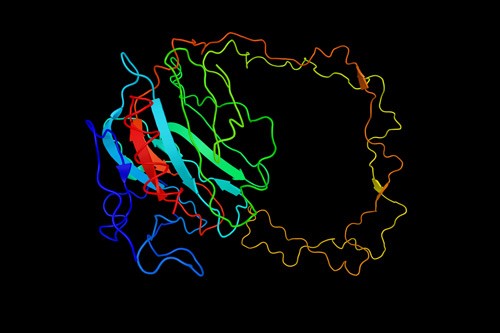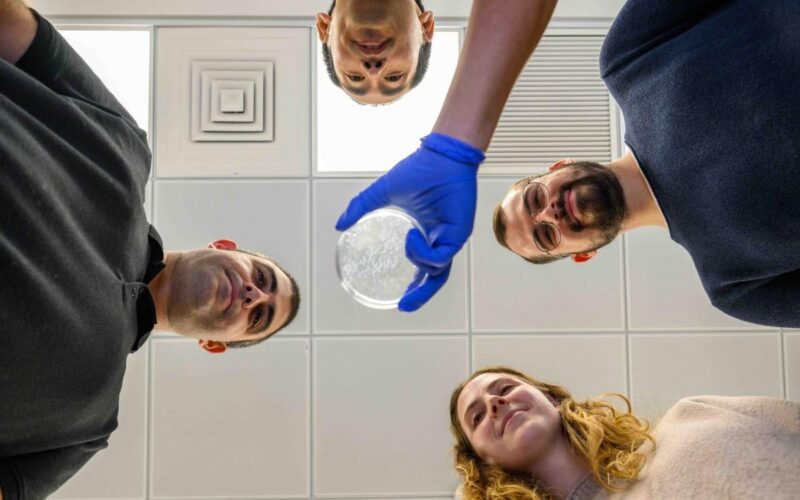
October 9, 2021
Tracing the evolution of protein maintenance in cellular ‘boroughs’, students of the Weizmann Institute’s Professor Dan Tawfik’s have now published their study following his untimely death.
When we contemplate the grandeur of life that evolution has crafted – a “tangled bank clothed with many plants of many kinds, with birds singing on the bushes, with various insects flitting about, and with worms crawling through the damp earth” as Charles Darwin put it – it is difficult to imagine that these “elaborately constructed forms, so different from each other” had but one “so simple a beginning”. They are all thought to have evolved from the last universal common ancestor, or LUCA, that emerged more than 3.6 billion years ago.
LUCA is believed to have been a pool of single-celled organisms much simpler than any of the microbes we know today, harbouring only a few hundred simple proteins.
As all forms of life diverged from LUCA, the repertoire of proteins also expanded on a grand scale. But large, complex proteins such as those present in plant and animal cells come with a risk: They must fold into intricate structures, yet they often fail to fold properly, and even those that do fold eventually become damaged, accumulating and forming toxic aggregates that can kill the cell.
Life has met this challenge by evolving dedicated maintenance machinery: molecular chaperones, the so-called guardians of proteins that help them fold or refold properly, dismantle protein aggregates and redirect proteins for degradation once they are deemed beyond repair. Just as an immense metropolis is divided into boroughs (think of the five boroughs of New York City), making the maintenance of its extensive infrastructure easier to handle, so cells have five unique yet mutually cooperative molecular chaperone families that together coordinate the quality control of proteins.
What happened to proteins and chaperones during evolution? More specifically, how did the proteome – the complete set of an organism’s proteins – expand over the course of evolution’s nearly four billion years, and how did chaperones evolve to support this expansion?
To address these questions, the late Professor Dan Tawfik of the Weizmann Institute of Science’s Biomolecular Sciences Department, together with Dr Saurav Mallik, teamed up with Professor Pierre Goloubinoff and Mathieu E. Rebeaud of the University of Lausanne. They collected the proteomes of 188 representative organisms from all the major kingdoms and plotted them on a Tree of Life, with LUCA at its root and various branches representing the relative order in which different classes of organisms diverged over time. They then performed a systematic bioinformatics analysis that explored the evolution of proteins and chaperones along the Tree.
The analysis, published recently in a PNAS article, revealed how the increase in the complexity of the organisms went hand in hand with growing protein complexity. From single-celled organisms called archaea to mammals, the total number of proteins per proteome grew nearly two hundredfold – from about 700 in the simplest archaea to about 120,000 in humans. Individual proteins also became larger, and completely new proteins, with new folds and fold combinations, were born over time.
Chaperones too were simple at the beginning of cellular life, and only two of the five chaperone families were present in LUCA. When life expanded from the oceans to land, in all likelihood around three billion years ago, and terrestrial bacteria evolved, the remaining three chaperone families emerged, as did the first specialised assistant molecules called cochaperones. These assistants promote chaperone activities, increase the chaperones’ ability to work cooperatively as an integrated network and redirect damaged proteins to chaperones for repair.
But surprisingly, no new chaperones have been born since, even when the complexity of proteins soared with the appearance of multicellular organisms, as did the proportion of proteins prone to misfolding and aggregation. How does a three-billion-year-old chaperone system perform quality control of the enormously complex modern proteins?
The study’s analysis showed that as proteins became more diverse and abundant, cells added even more chaperones. In fact, chaperone concentration in the cell rose, relative to all the other proteins, nearly sixfold, and most of this increase occurred during the emergence of complex life forms.
Mallik described chaperone evolution in terms of the city maintenance analogy: “No matter how massive a city grows, we don’t come up with new ways to supply water, pick up garbage or treat the sewage – we simply recruit more people and machines to do the extra work. Similarly, to meet the growing challenges of protein maintenance, plant and animal cells increased the amount of chaperones relative to other proteins.”
In parallel, cochaperones grew not only in number but also in diversity: from four cochaperone families in bacteria to twenty in certain mammals.
“With the increase in chaperone concentration and the emergence of a cochaperone workforce, life has resolved the ‘protein quality control’ problem,” Mallik concluded.



Calnexin – one of many chaperone proteins that assist in the correct three-dimensional folding of proteins. Image: Shutterstock





